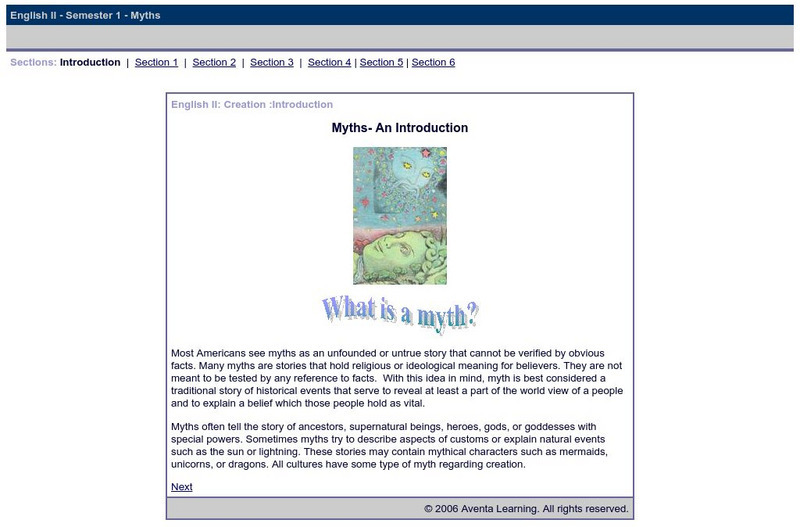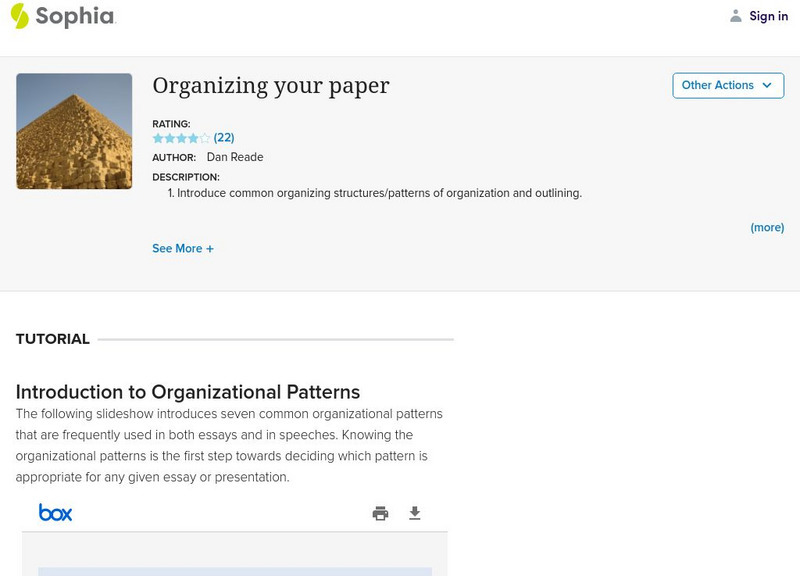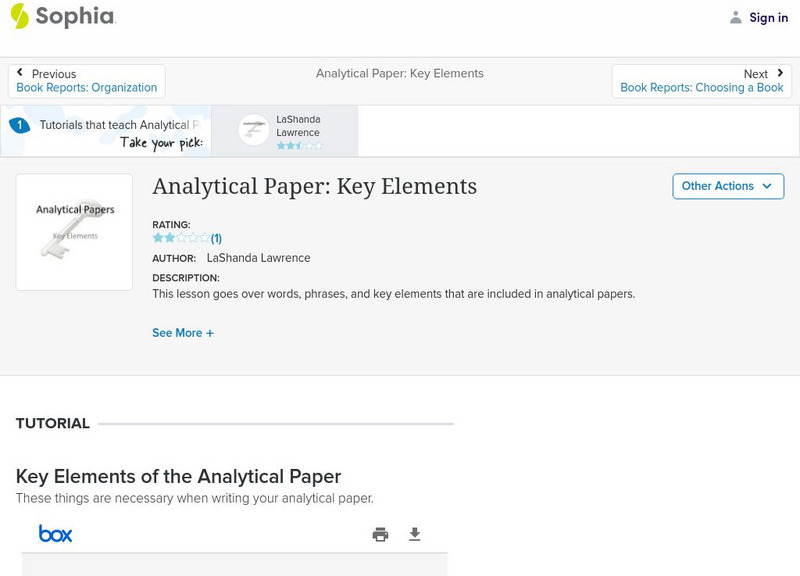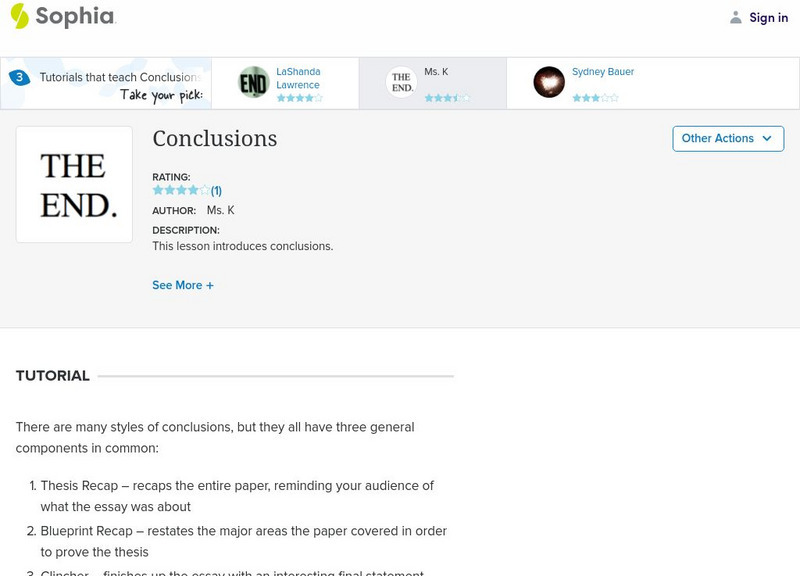Hi, what do you want to do?
Alabama Learning Exchange
Alex: Hershey Kiss Descriptive Essay
This is a fun lesson to demonstrate the power of words to describe a simple chocolate treat prior to writing a five-paragraph descriptive essay.
University of Wisconsin
Univ. Of Wisconsin Madison: Writing Center: Thesis and Purpose Statements
Explains the thesis statement and distinguishes it from the purpose statement. Gives an example of a paragraph containing both. Be sure try the link at the bottom of the page, "Developing a Thesis Statement." This page goes into further...
Capital Community College Foundation
Guide to Grammar and Writing: Principles of a Composition
Writing a Paper? Here at the Capital Community College is everything you could ever ask for while preparing your essay. This site includes the writing process, structure, thesis statement, transitions, the computer as a writing...
Department of Defense
Do Dea: What Is a Myth?
Learn about myths from around the world in this self-guided unit while also learning how to construct a compare and contrast essay. Included are characteristics of creation myths, videos about Chinese and Egyptian myths, and a step by...
Alabama Learning Exchange
Alex: Better Living Through Science
This lesson involves research on scientists whose accomplishments have impacted areas of nutrition, sanitation, or health care. Students will research an area of their choice, record information on a graphic organizer, and use the...
Alabama Learning Exchange
Alex: Let's Eat: An Expository Slideshow Presentation
Students will write a three-paragraph essay explaining the steps necessary to follow a recipe and then present and serve the recipe to their classmates.
Sophia Learning
Sophia: Introductions: Lesson 4
This lesson introduces introductions. It is 4 of 5 in the series titled "Introductions."
Cambridge Rindge & Latin School
Cambridge Rindge & Latin School: Making an Outline
A tip sheet on how to create and outline for a research paper.
Other
Book Rags: Articles: How to Write a Compare/contrast Essay
Learn about two different ways to organize a compare and contrast essay and how each way looks in a paragraph breakdown.
Sophia Learning
Sophia: Organizing Your Paper
Two slideshows and a screencast on organizational patterns used when writing essays and speeches. The first is a 20-slide presentation explaining the seven most common organizational patterns used in writing: time sequence, spatial,...
Grammarly
Grammarly Handbook: Conclusion or Summary
This Grammarly Handbook resource explains the purpose on writing a summary or conclusion of an essay. Brief "how to" tips are provided for writing a summary or conclusion to an essay.
Sophia Learning
Sophia: Analytical Paper: Key Elements: Lesson 2
This lesson goes over words, phrases, and key elements that are included in analytical papers. W.11-12.4 Clear/Coherent Writing
Sophia Learning
Sophia: Conclusions: Lesson 3
This lesson introduces conclusions. It is 3 of 5 in the series titled "Conclusions."
















